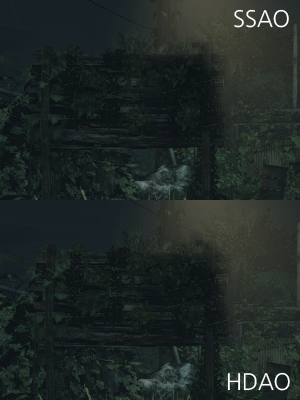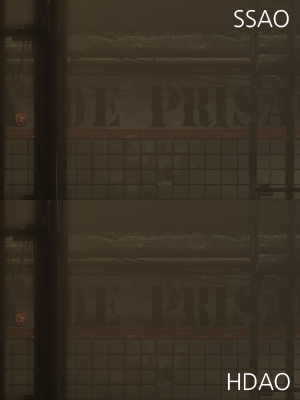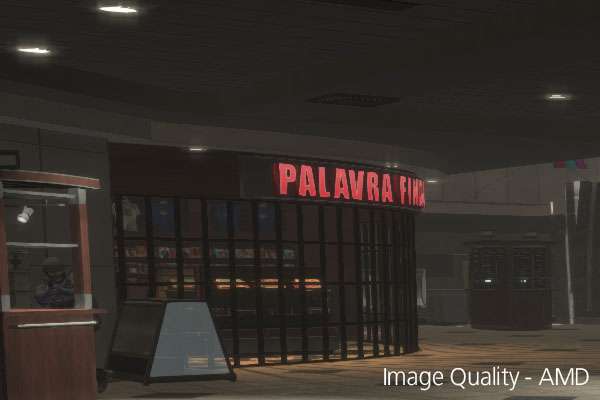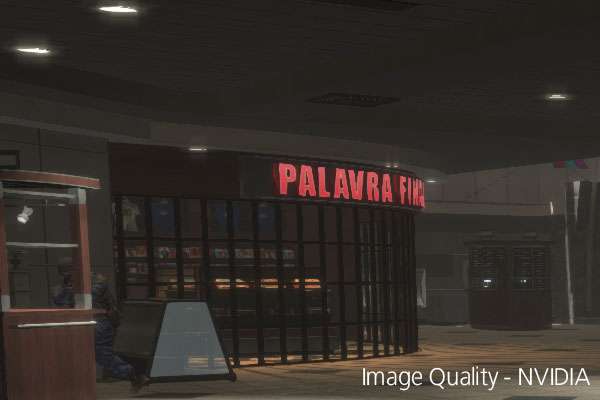- Qualcomm Launches Snapdragon 4 Gen 2 Mobile Platform
- AMD Launches Ryzen PRO 7000 Series Mobile & Desktop Platform
- Intel Launches Sleek Single-Slot Arc Pro A60 Workstation Graphics Card
- NVIDIA Announces Latest Ada Lovelace Additions: GeForce RTX 4060 Ti & RTX 4060
- Maxon Redshift With AMD Radeon GPU Rendering Support Now Available
A Technical Look at Max Payne 3

With Max Payne 3 reviewed, how about we take a look at the game from a technical perspective? Wondering what the game brings to the tessellation table? How FXAA compares to MSAA? Whether HDAO is really worth the performance hit? We tackle all these questions and more, so read on.
Page 2 – Ambient Occlusion & Image Quality
Ambient Occlusion is a rendering technique used to improve lighting on objects to give the appearance of proper global illumination. Due to both its performance benefit and ease-of-implementation, AO techniques have proven favorable to game developers compared to other methods. Computing AO can be done in a number of ways, but for the sake of games being more enjoyable at over 1 FPS, a common method is placing sphere light sources at points in a scene, wherever improved lighting is desired.
The first time PC gamers were introduced to an AO implementation was with the original Crysis. The exact method was screen-space ambient occlusion, requiring a DirectX 10 graphics card to execute. Since then, we’ve been exposed to a superior method, HDAO (high-definition ambient occlusion), which Max Payne 3 offers support for.
Being a lighting effect, shadows are in the direct crosshairs of things to be affected. The samples below feature ambient occlusion in each screenshot, but we’re comparing two different methods; SSAO and HDAO. In the first image, the differences are difficult to see, but in the second, the shadow in front of the text in the back wall is far smoother and more realistic when using HDAO.


As with our tessellation test, we have source images of the samples above that we recommend checking out. Download the archive (6.5 MB, JPG), load up the images full-screen in your favorite viewer, and flick between them. The differences will be much clearer when viewed this way.
Image Quality
Where image quality is concerned, we’d never expect either AMD or NVIDIA to dominate the other, but given that both companies have their own secret blend of tweaks in their respective drivers, some differences can be seen upon close inspection. With the image sample below, we can see that NVIDIA’s FXAA implementation is superior to AMD’s. Look no further than the sign directory in the background. While on AMD, some of the text is actually missing and the slots aren’t clear, that isn’t the case on NVIDIA.


In respects to other areas around the image, it’s hard to sign off on whether one company’s result is better than the other. The “Palavra” sign does appear to be a little smoother on NVIDIA, but overall, differences are minimal. In further testing, we found more evidence that the game looks better on NVIDIA, but it all seems to boil down to FXAA, an anti-aliasing method that NVIDIA has been heavily promoting (for good reason). It’s clear that NVIDIA has spent a lot more time on perfecting its implementation of FXAA than AMD, but because of its excellent IQ/FPS ratio, running MSAA will be for those who don’t mind the performance hit or are running a high-end multi-GPU single-display PC.
Once again, the sample above is small, so we’re offering the source images along with two other examples in this archive (14.2 MB, PNG).
Support our efforts! With ad revenue at an all-time low for written websites, we're relying more than ever on reader support to help us continue putting so much effort into this type of content. You can support us by becoming a Patron, or by using our Amazon shopping affiliate links listed through our articles. Thanks for your support!





